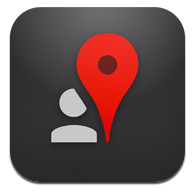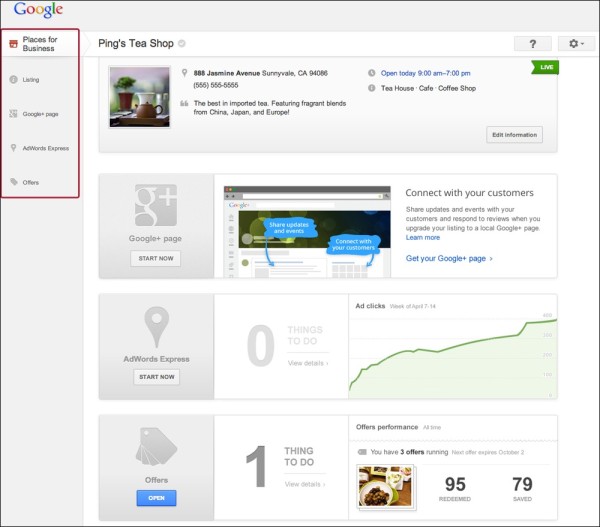Google Upgrades Its Google Places Dashboard With Google+ Local Integration
Google has begun a staged upgrade of its Google Places Dashboard — the backend tool that allows local businesses to manage their business information that appears in Google’s search results. A new dashboard that looks much more like the current Google (and Google+) aesthetic, and also offers some new functionality, will be available “over the […]
 Google has begun a staged upgrade of its Google Places Dashboard — the backend tool that allows local businesses to manage their business information that appears in Google’s search results. A new dashboard that looks much more like the current Google (and Google+) aesthetic, and also offers some new functionality, will be available “over the coming weeks.”
Google has begun a staged upgrade of its Google Places Dashboard — the backend tool that allows local businesses to manage their business information that appears in Google’s search results. A new dashboard that looks much more like the current Google (and Google+) aesthetic, and also offers some new functionality, will be available “over the coming weeks.”
It’s the latest step in Google’s (very) slow process of updating its business listings management from Google Places to Google+ Local. The consumer side of that switch happened last May, when Google’s local search results and listings became Google+ Local.
But local business owners have been dealing with a messy combination of Google+ and Google Places when managing their business data. (My use of “messy” is too generous; Mike Blumenthal more accurately called it a “train wreck” a few months ago.)
What’s New In The Google Places Dashboard
1.) New look/design.
The design is much more consistent with Google’s current look across most of its products — particularly Google+, with its navigation options in the left-hand column. Here’s a screenshot from Google’s announcement, and I’ve highlighted the menu options in the upper left.
(You can click for a larger version.)
There are separate tabs for managing listing information, a Google+ Local page, AdWords Express ads and Offers. I don’t see a tab for the basic stats and analytics that the existing dashboard offers; those may be rolled into one of the tabs that do show on the image, or they might be getting removed from the dashboard.
2.) More integration with Google products.
As you can see on the screenshot above, this example business has a tab on the left to enable management of its Google+ Local page. More specifically, Google says the dashboard now gives local business owners a way to access the social features of Google+ — “sharing photos, videos or posts.” Local business owners without a Google+ account won’t have that navigation tab in their dashboard.
The current (soon to be old) dashboard offered no such integration with Google+ Local pages. You could update basic business information in the dashboard, but there was no way to post to Google+ from there and no guarantee that even basic edits (like a new phone number) would make their way to the Google+ Local page in any reasonable timeframe. Which leads to another new promise/feature from Google….
3.) Faster updates.
Google is promising faster data updates in most cases:
Most edits made via the upgraded user interface now appear on Google Maps and our suite of other services within 48 hours. As before, we may continue to moderate changes to ensure the highest quality local experience.
There are other features not specifically called out in Google’s announcement; for example, Mike Blumenthal writes that the new dashboard allows service area-based businesses — those that travel to customers instead of having their own location (like plumbers, for example) — to have Google+ Local pages for the first time.
It looks like the new Places for Business dashboard is a step in the right direction, and a welcome one, for sure. But, without being able to actually see how the new dashboard integrates with Google+ Local Pages, I’ll hold off in declaring how big a step it is.
Postscript, April 3: Google employee Joel Headley has written a detailed post in Google’s help forums that explains how different local business owners should respond to this update — i.e., if you’re already using Google+ Local, if you’re completely new to Google’s local services, if you have more or less than 10 locations and so forth.
Contributing authors are invited to create content for Search Engine Land and are chosen for their expertise and contribution to the search community. Our contributors work under the oversight of the editorial staff and contributions are checked for quality and relevance to our readers. The opinions they express are their own.
Related stories
New on Search Engine Land
